Building a Music Portfolio
Whether you’re applying to a college music program, auditioning for a performance opportunity, or pitching yourself for paid gigs, a compelling music portfolio can make all the difference. But what exactly makes a portfolio shine? Let’s break it down.
What Should Be in Your Music Portfolio?
- A Strong Bio or Artist Statement
Begin with a clear, concise artist bio. Tell your story: who you are, what inspires you, your training, and your musical goals. For college applications, tailor this to highlight your academic and creative achievements. For gigs or auditions, focus on your unique sound and performance experience. - High-Quality Recordings
Your recordings are the heart of your portfolio. Include 2–5 pieces that showcase your versatility, technical skill, and musicality. If you’re applying to a conservatory, follow their repertoire requirements exactly. For professional gigs, choose pieces that demonstrate what you can bring to the event like weddings, jazz sets, cover bands, or original music.
Pro Tip: Invest time in getting clean audio and video. Use a good mic, record in a quiet space, and if possible, get help from someone experienced in recording live performances.
- Performance Videos
Visuals matter! Videos show your stage presence and how you connect with an audience. Even if it’s a simple home video, ensure you’re well-lit and that your instrument or vocals are clear. - Sheet Music or Compositions
If you compose or arrange, include your sheet music or scores. This demonstrates your creativity and skill as a musician. - Resume or Repertoire List
For college or professional auditions, include a music resume detailing your training, ensembles, notable performances, and awards. A repertoire list is helpful if you have an extensive catalog of pieces you can perform. - Letters of Recommendation (When Required)
Many college applications require letters from teachers or mentors. Be sure these speak to your work ethic, talent, and potential. - Professional Photos
A few high-quality photos can go a long way, especially if you’re pitching yourself for paid gigs or building an online profile. Dress appropriately for your genre and make sure your personality shines through.
How to Organize and Present Your Music Portfolio
- Digital Folder or Website: A polished digital portfolio is now the standard. Use Google Drive, Dropbox, or a simple personal website to share your materials. Make sure your files are named clearly.
- PDF Portfolio: Combine your bio, resume, repertoire list, and any letters into one PDF file. This looks professional and keeps important documents easy to access.
- Highlight Your Best Work First: Arrange your recordings and videos so that the strongest piece is seen first. Audition committees or bookers may only listen to the first minute, so make it count!
Final Tips for Success
- Double-check submission guidelines for schools or gigs and follow them to the letter.
- Keep your materials updated as you gain new experience.
- Ask teachers or mentors for honest feedback before you share your portfolio.
- Practice introducing yourself. Your personal presentation in an audition or interview is part of your portfolio too!
Ready to Take the Next Step?
Building a music portfolio can feel overwhelming, but you don’t have to do it alone. If you want expert help with practicing, selecting pieces, or polishing your audition skills, our experienced instructors are here for you. Sign up for personalized music lessons today! Call or submit a contact form to get started.



